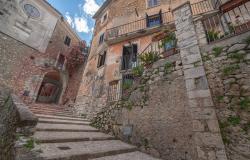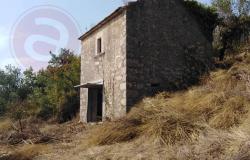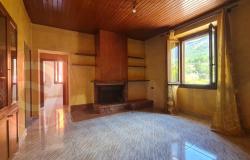Fashionable beaches and beauty spots along the Lazio coast are the latest areas to fall victim to a beetle munching through the country's palm trees, experts have warned.
The red palm weevil has attacked trees in Sabaudia, a coastal resort south of Rome which attracts celebrities like actor Raoul Bova and soccer star Francesco Totti, and in the nearby National Park of Circeo, causing hundreds of thousands of euros in damage.
Experts say around 30% of palms in Lazio are affected, with the rusty-coloured beetle preferring those growing along the region's oast.
Around 100 trees have been cut down in Rome, although the weevil has so far spared palms growing in Vatican City.
Sicily remains the worst affected region in Italy, however.
The weevil has set up home in some 30,000 palms on the island - more than three times as many than experts first thought - and the regional government has asked for a state of disaster to be declared.
The beetle has also been causing problems in Campania, the region around Naples, where 2,000 palms had to be cut down last year.
Experts warn that for every palm which shows symptoms of weevil infestation there are two others that have yet to show signs.
The weevil's larvae excavate holes up to a metre long in the trunk of the palms, which kills the tree. This is because they bore towards the core of the tree destroying tissue needed to spread nourishment
A major infestation can kill a large palm in 20-30 days, while a tree affected with fewer bugs can take up to eight months to die.
Experts say the beetle is costing the regions dear: a 20-metre palm is worth around 20,000 euros, while cutting down the tree incurs a fee of some 1,000 euros.
Researchers at Florence University are examining the DNA of weevils from various parts of the country to understand whether they all come from a single invasion and if there are differences in the regional groups.
They also hope to identify any chemical substances involved in the beetle's life cycle, especially since males seem able to attract other weevils to a palm tree that is particularly suitable for depositing eggs.
Traps baited with pheromones have had some success in controlling the beetle elsewhere in the world, although insecticides are of limited use since the weevil spends almost its entire life safely inside the tree.
''We can think about controlling it, but eradication is impossible,'' admitted researchers Rita Cervo and Giuseppe Mazza.
The red palm weevil originated in Asia and is believed to have reached the Mediterranean in the 1980s, after spreading into Africa.
It was first identified in Spain in 1994 and turned up in France in 2006.
The beetle arrived in Italy in 2004 and has been found in the regions of Puglia and Tuscany as well as Lazio, Campania and Sicily.
In 2007, forest rangers in Catania were forced to cut down a palm tree over 100 years old which had been destroyed by the voracious beetle.










